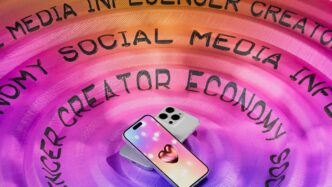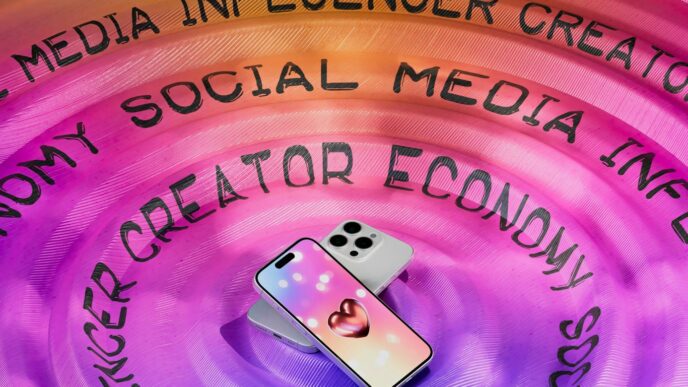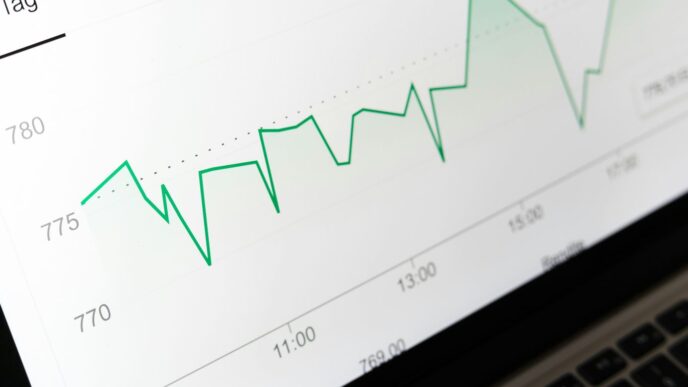If you’ve checked out the marketing world lately, you’ve probably noticed things are moving fast—maybe even a little too fast. In 2025, new marketing communication tools are everywhere, and they’re changing how businesses talk to people, make decisions, and plan their next move. It’s not just about flashy ads or clever taglines anymore. Now, it’s about using smart tech to connect with the right folks, keep them interested, and actually track what’s working (and what’s not). Whether you’re running a big company or just starting out, these tools are making a difference in ways that would’ve sounded like science fiction a few years ago. Let’s break down what’s happening and why it matters.
Key Takeaways
- AI is making it much easier for businesses to talk to smaller, more specific groups of people—and actually say things that matter to them.
- Content creation isn’t just for big teams anymore. With automation, anyone can make videos, write posts, or even get help editing, all in less time.
- Data tools are giving companies a clearer picture of what’s going on with their marketing, so they can change things up quickly if something isn’t working.
- Chatbots and smart messaging are letting businesses answer questions and keep conversations going around the clock, without burning out staff.
- With all these new tools, it’s even more important to handle customer data the right way and be honest about how tech like AI is being used.
AI-Driven Personalization Unleashed by New Marketing Communication Tools
Smart marketing tools in 2025 aren’t just catching up—they’re making personalization an everyday reality for companies big and small. Businesses are swapping broad-stroke campaigns for targeted messages that connect with each customer like never before. If you’ve tried, say, chasing new leads or tailoring offers by hand, you know it can be a time sink. Now, AI-powered tools are stepping in to do the heavy lifting.
Predictive Targeting for Niche Audiences
Instead of sending one-size-fits-all messages, AI helps brands spot and target small groups based on real interests and likely behaviors. These tools look at patterns in browsing, purchases, and even social media chatter to predict what certain niche groups want next. Here’s what predictive targeting handles well:
- Identifies fast shifts in customer interests using real-time trend tracking
- Tests micro-segments with small, specific campaigns before going bigger
- Reduces wasted marketing spend by focusing only on the most promising prospects
With predictive targeting, marketers don’t have to guess anymore—they know who’s most likely to buy.
| Campaign Type | Cost Savings (%) | Conversion Lift (%) |
|---|---|---|
| Manual Targeting | 0 | 12 |
| Predictive AI Targeting | 22 | 29 |
Take a look at the top AI personalization tools of 2025 if you’re looking for a starting point.
Hyper-Personalized Customer Journeys
Forget about everyone getting the same welcome email. Today’s AI tools are mapping unique customer journeys, giving each person exactly what’s useful to them every step of the way. The process often includes:
- Collecting signals from multiple channels, not just email or social alone.
- Adjusting content and recommendations as a user moves through their journey.
- Triggering offers or messages exactly when users show intent (like viewing a specific product).
Customers notice when content feels tailored and timely, and they’re far less likely to ignore brands that get it right.
Dynamic Content Automation in Real Time
AI is now able to swap out images, copy, and even layouts on the fly, depending on who’s looking at your website or email. This isn’t basic personalization—it’s more like a conversation that updates itself constantly. Key features include:
- Automated testing of headlines, images, and calls-to-action, changing them out instantly for best results
- Real-time updates based on time of day, device, or even weather in a customer’s city
- No-code tools, so marketers don’t need tech skills to manage large-scale campaigns
The biggest change here: what used to take weeks of A/B testing now happens live, allowing brands to learn and adapt on the go. With this shift, AI-driven personalization is setting new expectations for what modern marketing can achieve.
Transforming Content Creation With AI and Automation

Marketing content isn’t what it used to be, and that’s not a bad thing. In 2025, businesses use a variety of AI-powered tools that have changed how teams plan, write, and share content with customers. Here’s how these tools are shaping what we see and read online now.
Short-Form Video and Visual Storytelling
Short videos and eye-catching visuals run everywhere from TikTok ads to product explainers. AI video generators and image tools make quick turnarounds possible, cutting traditional production times nearly in half. With tools that create localized visuals for different markets or synthetic voices that narrate in many languages, brands now put out global content with much less effort and expense.
- Instant creation of custom graphics, animations, or explainers for new launches
- Localized video ads for specific cultural audiences
- Consistent branding with AI-generated imagery across social feeds
A recent report shows that companies using AI image and video generators reduce content costs by about 40% compared to 2022—and they can manage several campaigns at once without extra hires (generative AI adoption).
Automated Copywriting and Editing Assistance
AI copywriting platforms don’t just spit out robotic-sounding blurbs anymore. These days, they write ad copy, emails, and landing pages that have the right tone for each brand. Many tools also check grammar, suggest edits, and even help teams sound more consistent in their outreach.
Key benefits many marketers talk about:
- Drafts for new campaigns ready within minutes
- Brand voice stays on track across different products
- SEO suggestions built right in to help content get found
A lot of businesses say they finish first drafts 60% faster, freeing up time for creative ideas, not just editing copy.
User-Generated Content Integration
Collecting and reusing posts or reviews from customers has gotten easier. AI now helps spot which user photos, videos, or comments match the brand’s goals. These tools find the best user-made content and even help track who’s given permission to share it.
Here’s how teams tap in:
- AI sifts through large volumes of social posts and tags the best entries
- Automated processes sort user submissions by product, location, or mood
- Marketers receive alerts when standout user content appears
Automated content creation tools may not have closed the gap between adoption and results for everyone, but creative teams who mix automation with real feedback from customers have seen quicker launches and more organic engagement.
| AI Content Benefits (2025) | Reported Improvement |
|---|---|
| Time to publish new visual assets | -45% |
| Editing and review workload | -50% |
| Content cost per campaign | -40% |
| Audience engagement (video/posts) | +28% |
AI and automation haven’t made marketing simple, but they sure have made it easier to get ideas out fast and adjust when things aren’t working the first time.
Data-Backed Decisions Through Advanced Analytics Platforms
Modern marketing isn’t about gut feelings anymore. Today, decision-making relies on analytics platforms that crunch numbers in real time, pulling from every campaign and customer interaction. Companies are waking up to the fact that solid data can mean the difference between campaigns that flop and those that fly. Let’s walk through how businesses are making smarter, faster moves with advanced analytics.
Enhanced Audience Segmentation Using AI
AI analytics platforms are now better at slicing up audiences into very specific groups — way more detailed than just age or gender. Using predictive analytics, for example, you can spot customers most likely to buy again or the ones inching toward a competitor. Tools like Integrate.io and Fivetran absorb data from Facebook, Google Ads, HubSpot, and LinkedIn all at once, giving you a more complete picture of your customer base (top marketing analytics tools for 2025).
- Propensity modeling: Tells you which leads are most likely to take action, so you know where to focus your efforts.
- Lookalike audiences: Finds fresh targets that match your best customers.
- Automatic anomaly alerts: Spots odd changes in your data that could signal opportunity—or risk.
Even the best instincts can’t match the clarity that comes from watching audience segments shift in real time.
Real-Time Campaign Optimization
Old-school reporting is dead weight. Now, marketers want to tweak ads and messages as they run—not after. With real-time dashboards, you can see which posts hit hard, which emails flop, and where your ad dollars have the most impact. AI systems can automatically adjust budgets, headlines, or images as data streams in, no human intervention required.
| Benefit | Example | Result |
|---|---|---|
| Dynamic budget shifting | Move spend to strongest channels | Higher ROI |
| Multivariate testing | Test many ad versions at once | Faster wins |
| Predictive scheduling | Best time for each audience segment | More views |
Key steps for better campaign performance:
- Set up automated alerts for performance dips.
- Check in daily on live dashboards.
- Let AI-driven platforms rebalance spending.
ROI Tracking and Multi-Channel Measurement
With folks bouncing across apps and devices, knowing exactly where sales come from can get tricky. Advanced analytics platforms now let you track user journeys from first click through to purchase, across more channels than ever. This isn’t just for the big players—smaller brands can access these tools, too.
- All-in-one dashboards merge data from every campaign.
- Multi-touch attribution models show which channels drive results.
- Automated reports save hours, serving up the trends you need most.
When you see the true impact of every channel, marketing budgets start working smarter—not harder.
Nobody needs perfect data, but fast, accurate insights help marketers get ahead. That’s why advanced analytics platforms are driving such a huge shift for business strategy in 2025.
Elevating Customer Engagement via Conversational Tools

Chatbots using AI are reshaping how businesses talk to their customers. Instead of waiting for a reply during work hours, folks now get answers any time of day, even at midnight. These bots can do much more than just basic customer support. They help guide users through purchases, handle common complaints, and recommend products that fit your likes—all without a real person needed at every step.
- Always available, so customers aren’t left frustrated by delays
- Reduces workload on live agents, letting them solve trickier cases
- Delivers quick, relevant answers that keep people coming back
Businesses are surprised by the speed at which people adopt these new "digital helpers." I used to hate waiting in website chat queues, but now, a bot gives me simple info in seconds, and it kinda feels normal already.
So many homes now have smart speakers, and companies are moving their customer communications there too. With a voice command, you can reorder laundry detergent or ask about your latest invoice. People like talking out loud more than typing, especially if their hands are busy. Voice assistants make it easy to connect with a brand, place an order, or get store hours just by asking aloud.
| Channel | Typical Customer Query | Completion Rate (2025) |
|---|---|---|
| Chatbot Website | Order update | 93% |
| Smart Speaker | Refill account balance | 81% |
| Voice Mobile App | Book a service appointment | 86% |
Voice tech also helps older adults or people with vision problems connect almost as easily as anyone else. It’s not just a fun tool—it actually brings more people into the conversation.
People get tons of emails and texts, but with smarter tools, companies make sure each message is way more personal. Automated workflows can:
- Send birthday greetings or exclusive deals right at the perfect moment
- Follow up with reminders if your cart is left abandoned
- Gently nudge people with info based on stuff they actually showed interest in
This automated approach keeps businesses top-of-mind, but doesn’t feel like spam. The key? Letting the technology learn what’s useful and when to reach out, so it feels more like a conversation than a pushy sales pitch.
These new marketing tools have made it possible for brands to talk to folks like they’re real people, not just numbers. That makes a huge difference in building long-lasting connections and boosting engagement at every step; conversational marketing plays a big role here, as shown in customer experience strategies.
Omnichannel Experience Enhanced by New Marketing Communication Tools
Unified Brand Messaging Across Platforms
Today’s customer expects the same brand voice whether they see a company’s ad on Instagram, get an email, or chat on the website. Synchronizing marketing messages across all these platforms is essential for keeping things consistent and building trust. With new tools, businesses no longer have to wrestle with endless spreadsheets—AI platforms can instantly check, adjust, and update messages everywhere so nothing feels out of sync.
- AI-driven tools help automate message updates across channels.
- Scheduling posts or promotions is easier than ever with multi-platform dashboards.
- Analytics spot any off-brand communication and flag it for review.
It’s wild how much easier things are when everything just lines up, and suddenly, customers actually notice the effort.
If you’re curious how cohesion improves satisfaction, an omnichannel strategy streamlines customer support and makes every interaction feel connected from the first click to after-sales help.
Seamless Physical-Digital Experience Blending
Okay, so blending online and offline isn’t just a buzzword anymore—it’s what customers expect. People want to buy online, pick up in person, get QR codes in stores linking to digital content, or test products in a shop and order for delivery at home. Today’s tools make this possible:
- Mobile apps sync with in-store inventory and promotions
- QR codes in physical spaces trigger custom online experiences
- Digital receipts offer product suggestions and loyalty points automatically
Here’s a quick table showing how companies use offline-online touchpoints:
| Touchpoint | Example | Tool Used |
|---|---|---|
| Buy Online, Pickup | Reserve shoes, collect in store | Inventory Sync AI |
| QR Code in Store | Scan scarf’s code for styling tip | Link Routing Tool |
| Digital Loyalty | Earn points online or in person | CRM Integration |
Interactive Touchpoints for Customer Loyalty
Brands aren’t just pushing out messages—they’re opening doors for feedback, games, and two-way chats. Creating interactive moments adds a fun twist to buying and builds loyalty that goes beyond price or product.
- Rewards for actions like sharing feedback or referring friends
- Personalized quizzes recommend products and collect preferences
- Micro-surveys at checkout capture quick thoughts without being intrusive
Loyalty grows when brands treat every channel like an open invitation, not a closed announcement board.
All in all, today’s new marketing communication tools help companies keep up with customers wherever they are, making every touchpoint count. That’s what keeps people from drifting over to someone else’s site or store.
Building Agile Marketing Teams With Innovative Collaboration Tools
Agility isn’t just another buzzword anymore—it’s a survival trait for marketing teams in 2025. Collaboration tools are taking a front-row seat as daily work becomes more complex and rapid shifts in campaigns demand immediate response. These tools are now essential, helping teams work faster and smarter without drowning in emails or endless meetings.
Cross-Functional Campaign Management Platforms
Running a tight marketing campaign gets tricky fast—multiple people, moving deadlines, lots of versions floating around. Cross-functional platforms pull everything into one space. For example, using a suite like TeamWave means your marketing, sales, and even HR can manage campaigns together.
Benefits often include:
- Real-time updates on tasks and deadlines (no more outdated spreadsheets).
- Centralized communication, replacing scattered email threads.
- Shared files and feedback, so you know everyone’s always looking at the latest version.
- Easy onboarding for new team members.
Smooth handoffs and clear accountability keep campaigns from getting stuck in limbo.
Workflow Automation and Smart Scheduling
Nobody likes manual follow-ups or hunting down approvals. Automated workflows take care of simple, repeat tasks—think assigning leads, sending reminders, or prepping weekly reports. Smart schedulers now use AI to find the best time for meetings and deadlines, based on everyone’s calendar and a project’s pace.
Here’s what the new setup might involve:
- Automated task handoff when one phase finishes.
- AI-based deadline suggestions—no more overdue sprints.
- Automatic gathering of assets for team reviews ahead of deadline.
| Common Workflow Tasks Automated | Time Saved Per Week |
|---|---|
| Meeting scheduling | 3 hrs |
| Approval reminders | 2 hrs |
| Campaign status updates | 1.5 hrs |
| File organization | 1 hr |
Making these shifts has freed up time for teams to solve real problems instead of chasing down updates.
Collaborative Analytics for Strategic Planning
Instead of last-minute scramble over confusing metrics, collaborative analytics tools let everyone see data at once, talk about what’s working, and agree on changes together. Interactive dashboards pull in live campaign stats, ad spend, and customer engagement in ways everyone can actually use—not just the data geeks.
A few ways this helps:
- Instant sharing of insights during weekly syncs.
- Quick spotting of underperforming channels and acting right away.
- Everyone learns to read campaign data, making feedback stronger and less guesswork-driven.
Teams using these tools aren’t just moving faster—they’re making better calls together, which is half the battle in competitive marketing these days.
Ensuring Compliance and Trust With Responsible Data Practices
Building customer trust in 2025 means more than just meeting government rules or patching up security holes—now it’s about being honest and straightforward about how you use data. As businesses gather more customer information, their responsibility grows a lot wider, especially in light of broader ethical considerations and accountability.
Consent-Based Personalization Features
Today’s marketing tools give customers real power over how their personal info is used. Instead of generic privacy pop-ups, companies are rolling out:
- Preference centers where users set exactly what types of content they want
- "Why you’re seeing this" links that explain message targeting in plain English
- Easy opt-in and opt-out options on every touchpoint
A quick table showing some new consent-based methods:
| Feature | Customer Benefit | Business Impact |
|---|---|---|
| Preference Center | More control | Higher opt-in rates |
| Real-time Data Feedback | Increased transparency | Fewer opt-outs |
| Dynamic Consent Management | Ongoing choices | Fewer legal risks |
Transparent AI Use and Customer Privacy
Nobody likes a black box. Businesses now need to lay out how AI makes decisions and what data it touches.
- Publish plain-language guides to explain automated processes
- Put AI usage badges on chatbots or emails so customers can spot when they’re talking to a bot
- Set up easy pathways for users to review, update, or delete their info
Clarity is key—when customers know what goes on behind the curtain, they’re more likely to stick around.
Compliance Dashboards and Automated Reporting
Modern platforms are baking compliance right into their reporting tools, making it much easier for marketing teams to keep up with changing rules:
- Dashboards show real-time status of data handling (like consent rates and profile completion)
- Automated alerts flag risky behavior, such as unauthorized data access or missing disclosure messages
- Scheduled reports track all regulatory activity, ready in case auditors or partners ask for proof
Being honest about your data practices isn’t just about avoiding fines—it actually grows customer trust. When you show people what’s happening to their info and let them opt in or out easily, they’re far more likely to become loyal, repeat customers.
Conclusion
So, here we are in 2025, and honestly, marketing looks nothing like it did just a few years ago. Businesses are using all sorts of new tools—AI, short videos, chatbots, you name it—to reach people in ways that actually feel personal. It’s not just about blasting ads everywhere anymore. Now, it’s about figuring out what customers want and meeting them where they are, whether that’s on TikTok, in their inbox, or even through a chatbot on a website. Sure, it can feel overwhelming to keep up with all the changes, but the good news is that these tools are making things simpler and more efficient for everyone. If you’re willing to try new things and keep learning, you’ll find that these new marketing tools can really help your business stand out. The main thing is to stay curious and not be afraid to experiment. Who knows what next year will bring, but one thing’s for sure—marketing isn’t slowing down anytime soon.
Frequently Asked Questions
How are AI marketing tools changing business strategies in 2025?
AI marketing tools help companies better understand what their customers want by studying lots of data. These tools let businesses create ads and messages that are more personal, making it easier to reach the right people. They also save time by doing tasks automatically, so teams can focus on big ideas instead of small jobs.
What is predictive targeting and how does it work?
Predictive targeting uses smart computer programs to guess which groups of people are most likely to be interested in a product or service. It looks at things like past buying habits and online activity to help businesses send the right message to the right audience.
Why is short-form video important for marketing in 2025?
Short-form videos are popular because people like quick, fun content that is easy to watch on their phones. These videos help brands tell their stories fast and keep viewers interested. They also work well on social media, where most people spend their time.
How do chatbots improve customer service?
Chatbots are computer programs that can talk to customers any time of day. They answer questions, help people find what they need, and solve simple problems quickly. This means customers don’t have to wait for help, and businesses can give better service without hiring more staff.
What does it mean to have an omnichannel experience?
An omnichannel experience means that customers can connect with a business in many ways—like in a store, on a website, or through an app—and everything feels connected. The messages, offers, and help they get are the same no matter how they reach out, making things easier and more enjoyable for the customer.
How do businesses keep customer data safe with new marketing tools?
Companies use special rules and tools to make sure they only collect and use customer data with permission. They are open about how they use AI and keep customers’ information private. Many businesses also use dashboards to keep track of rules and make reports showing they follow the law.














